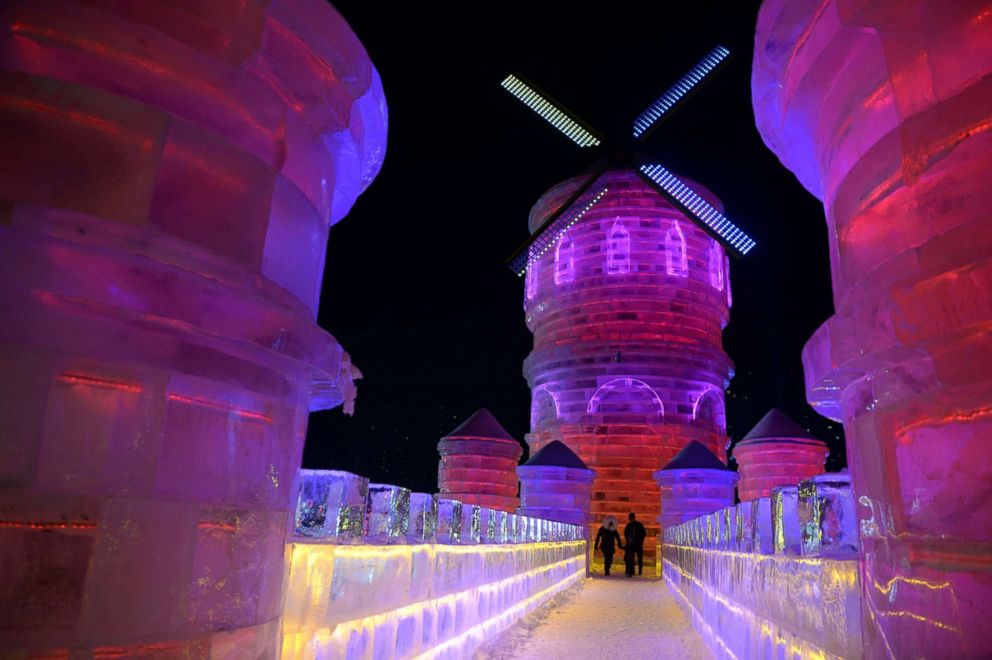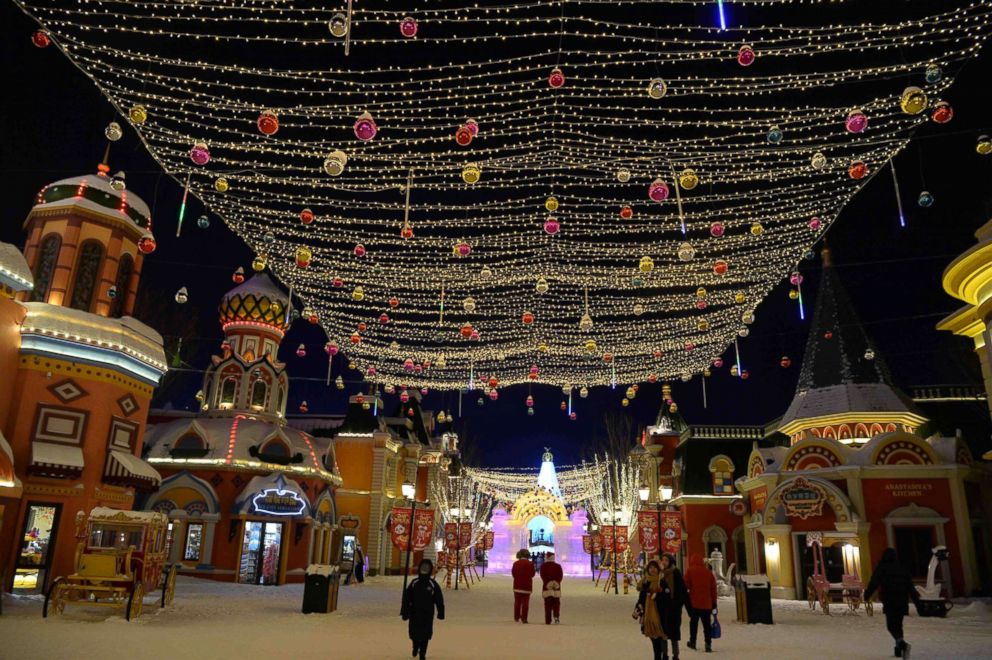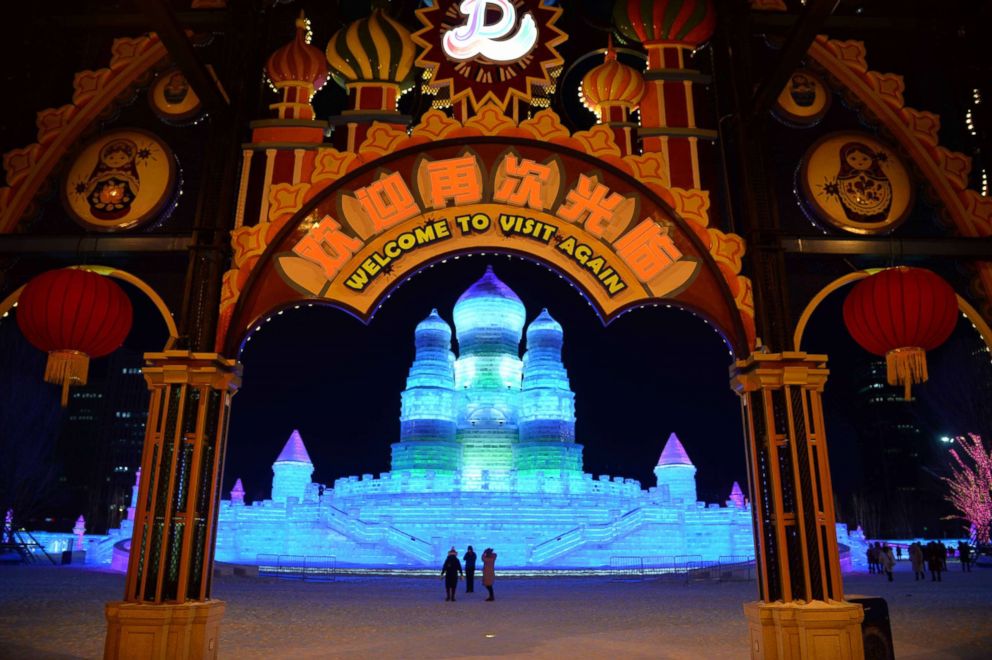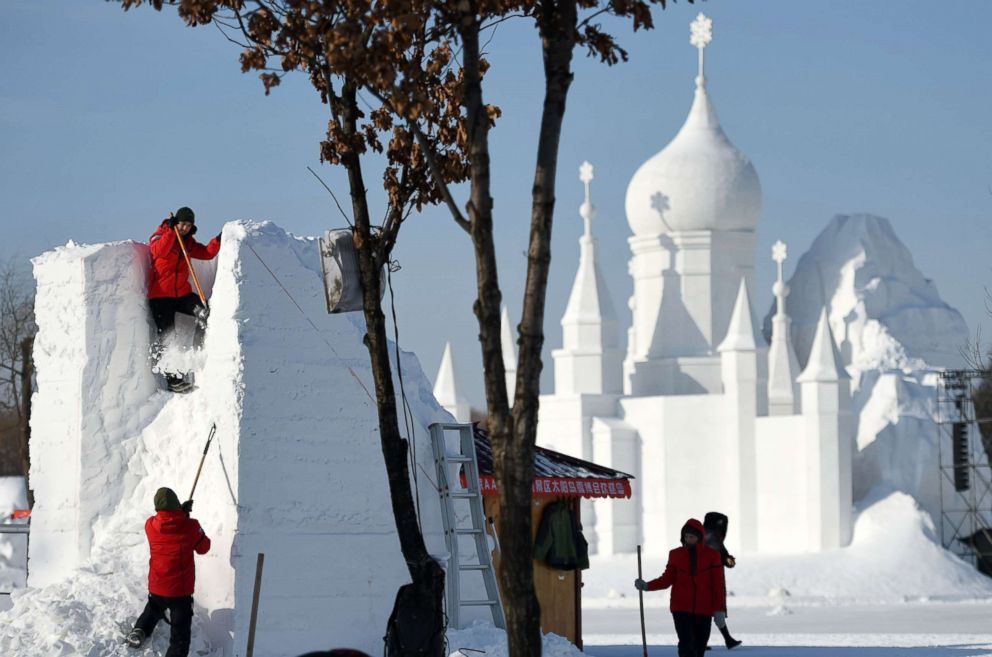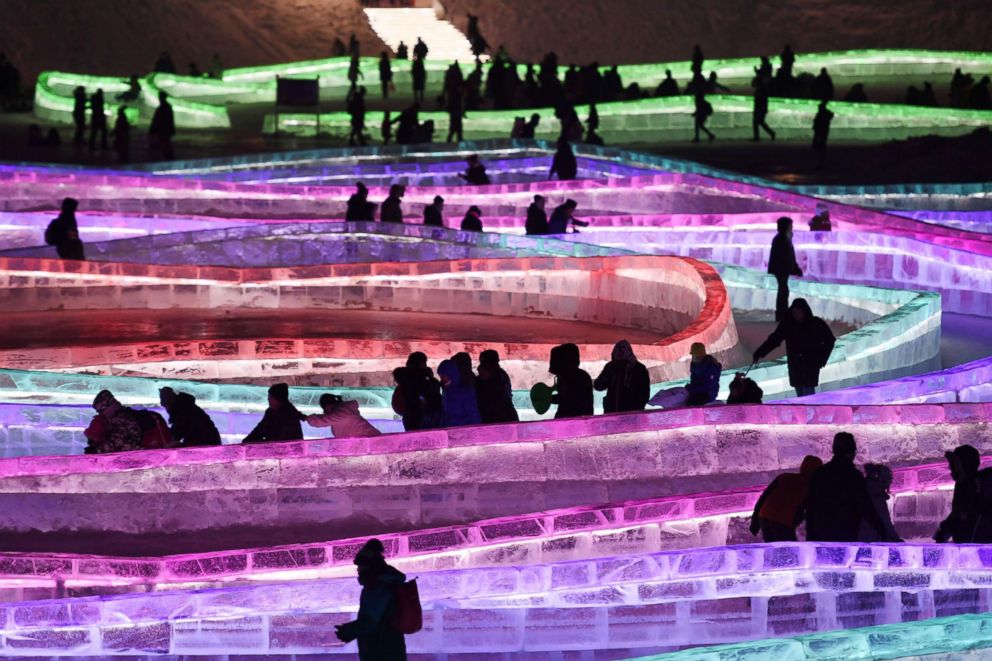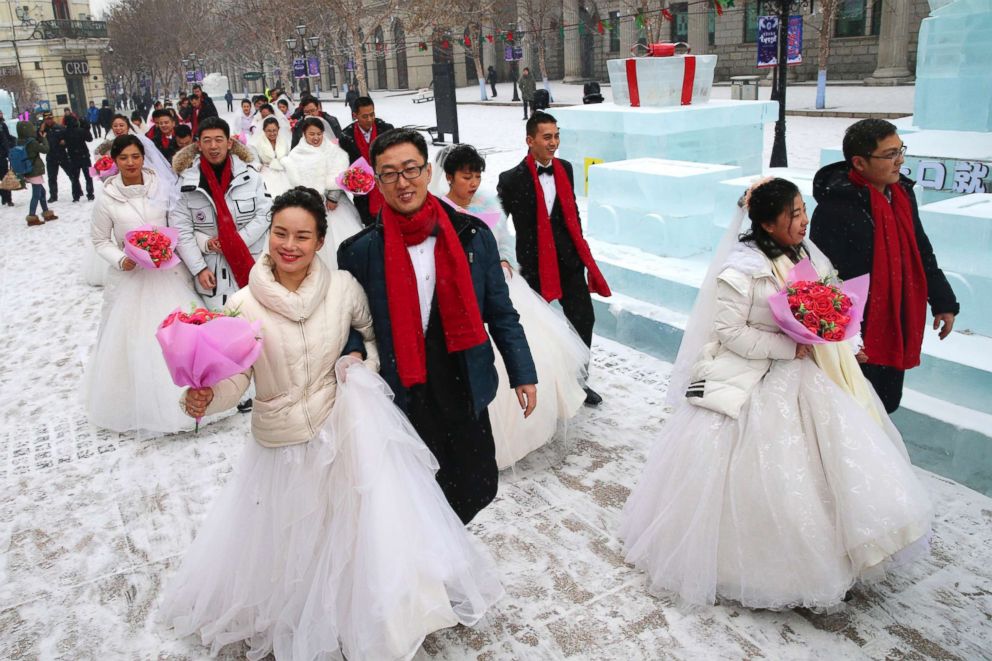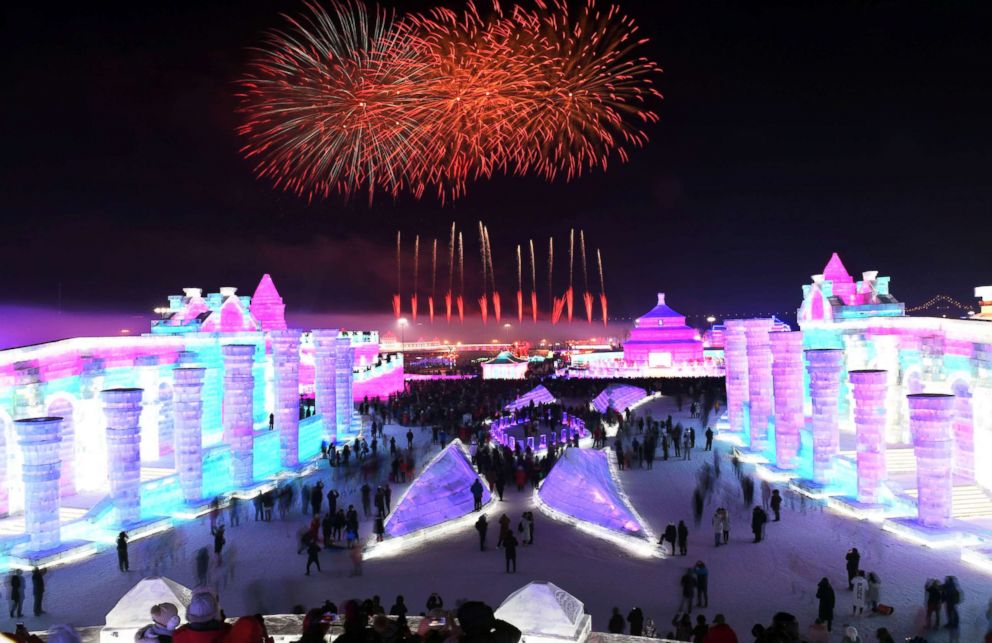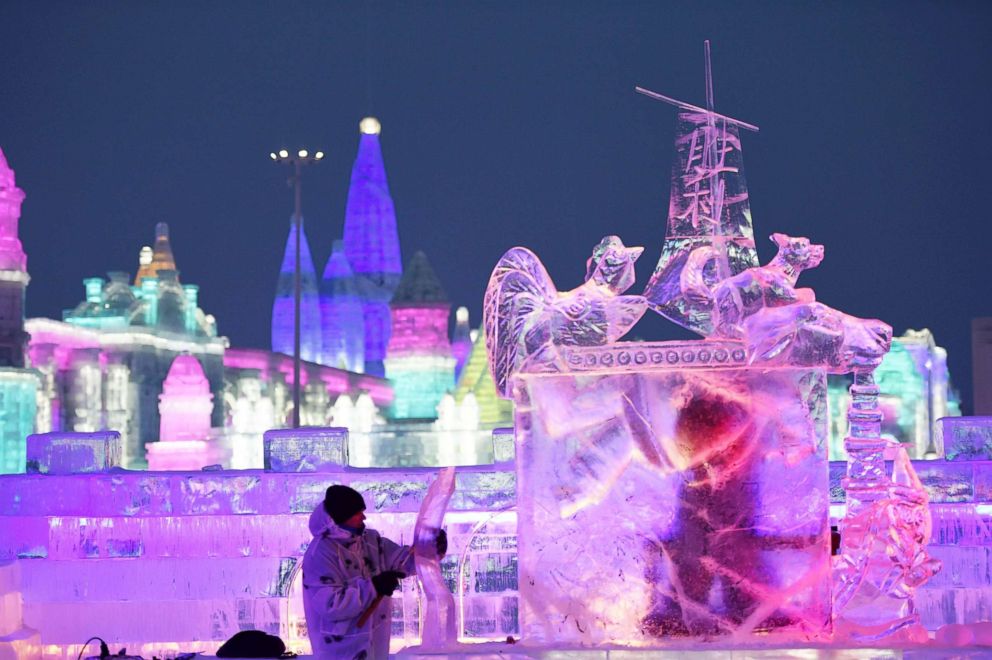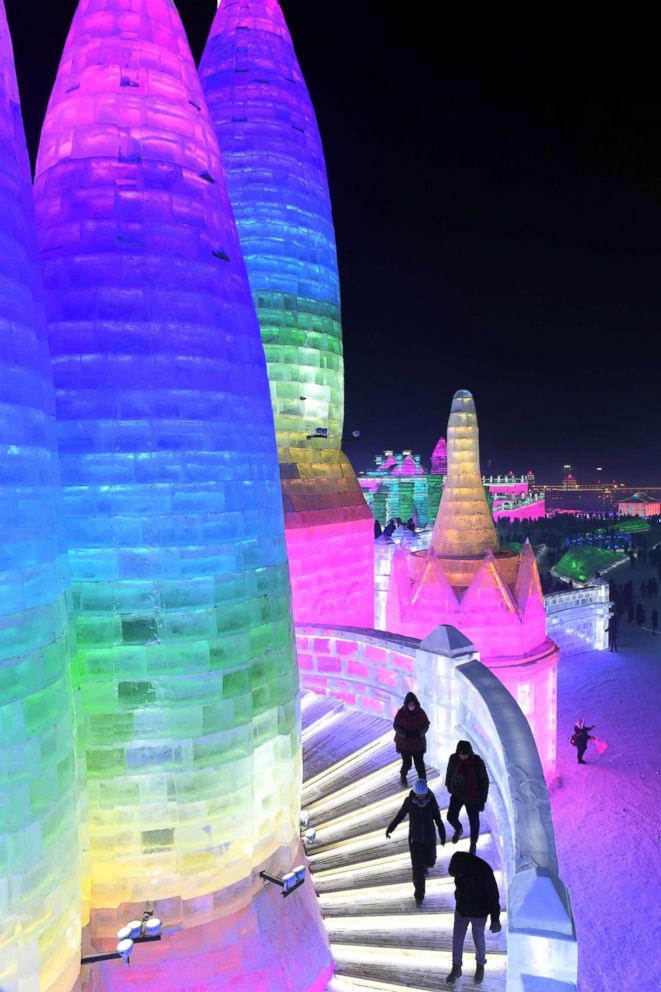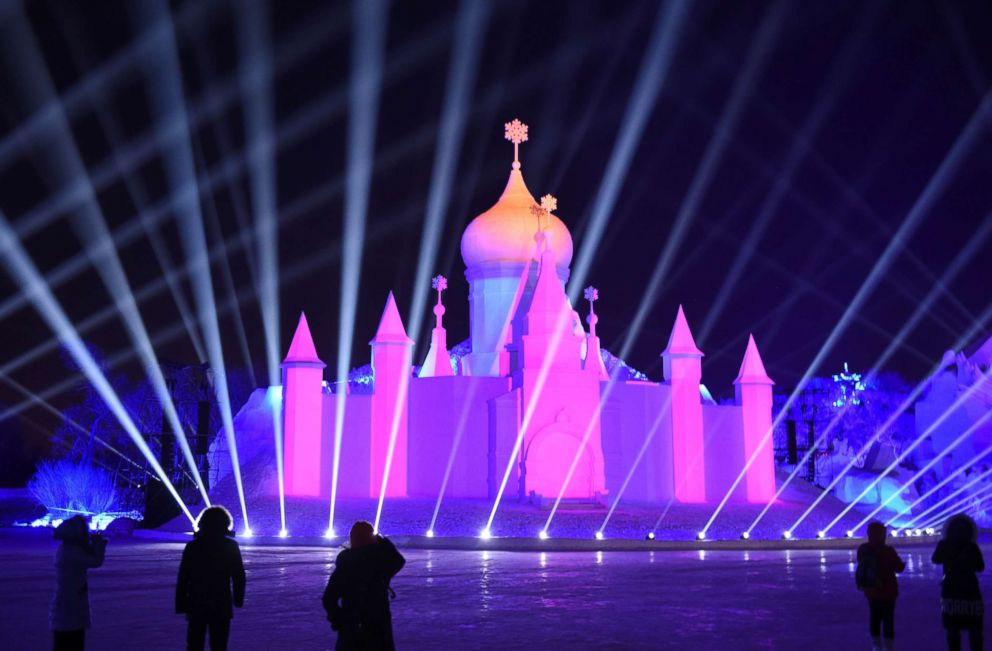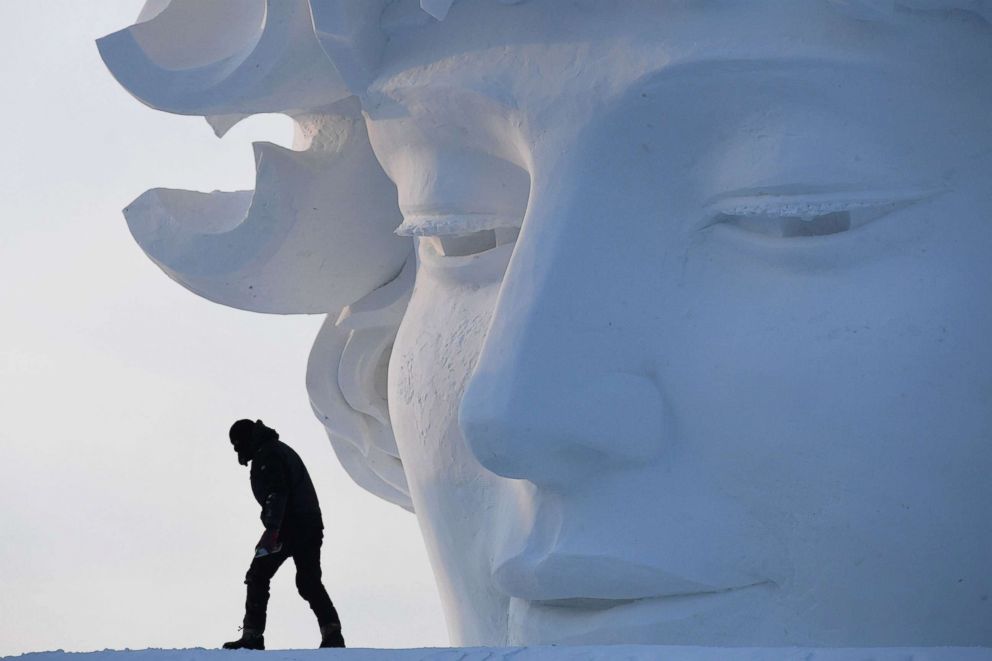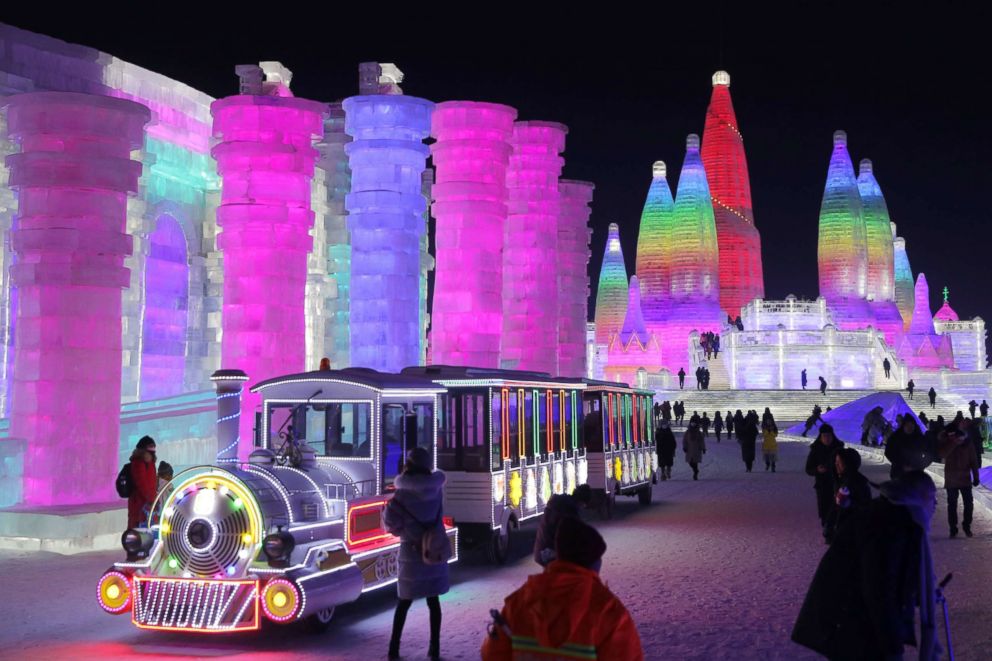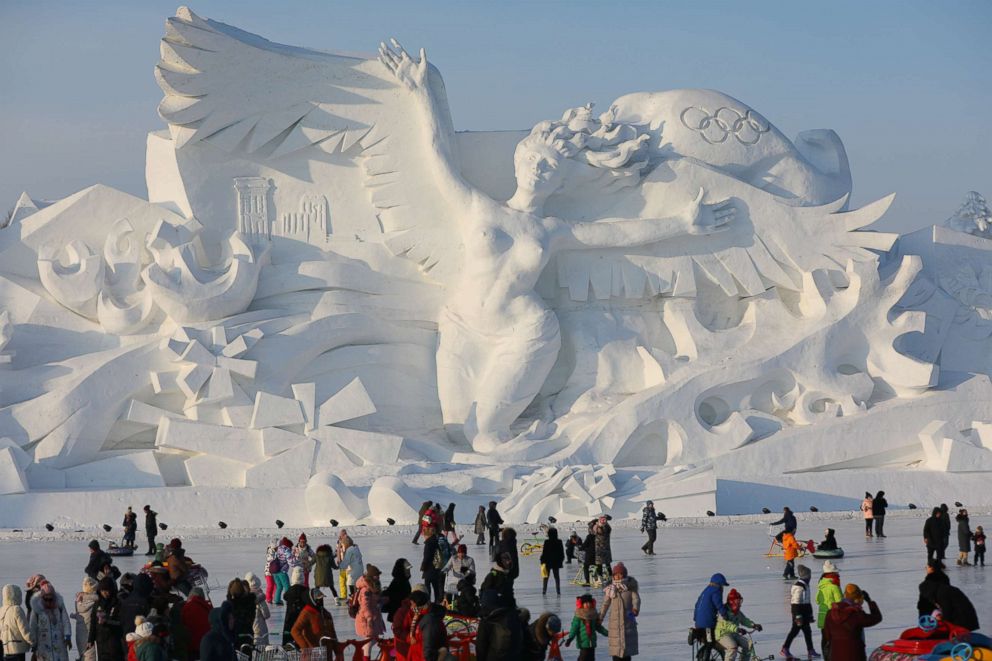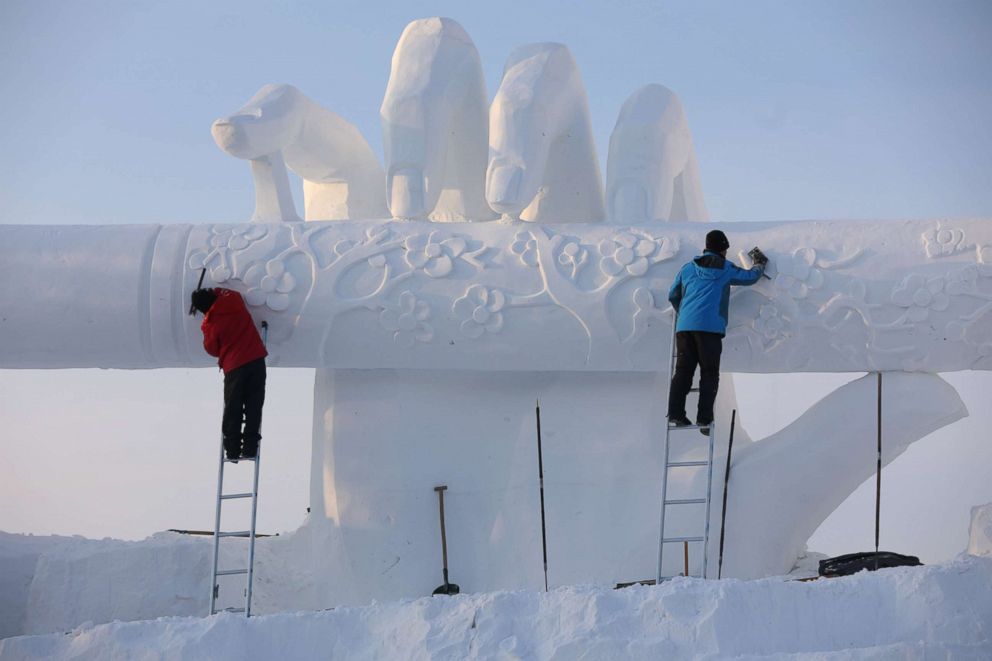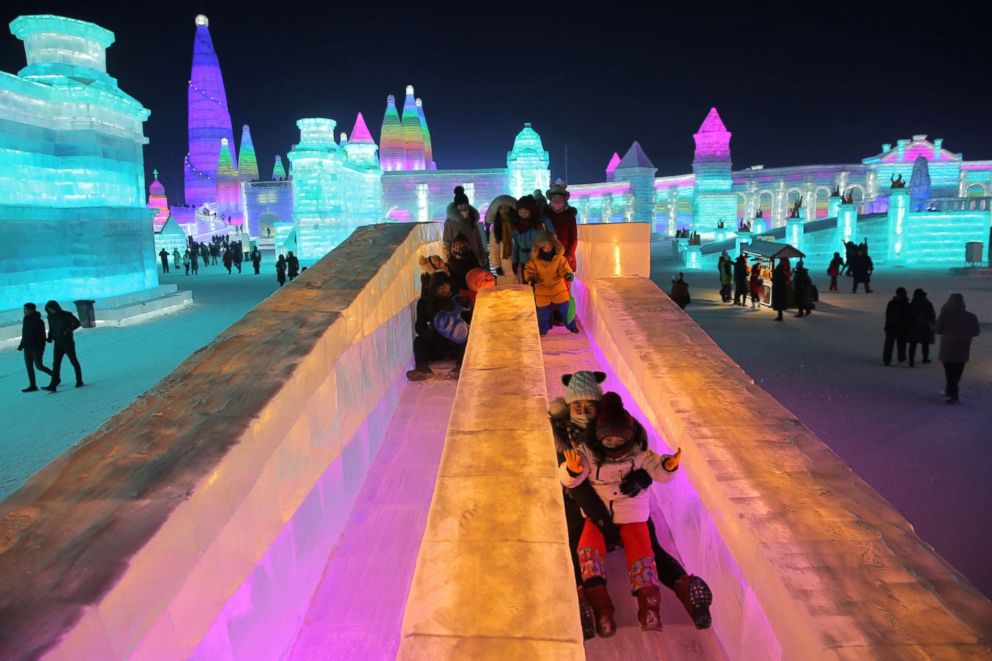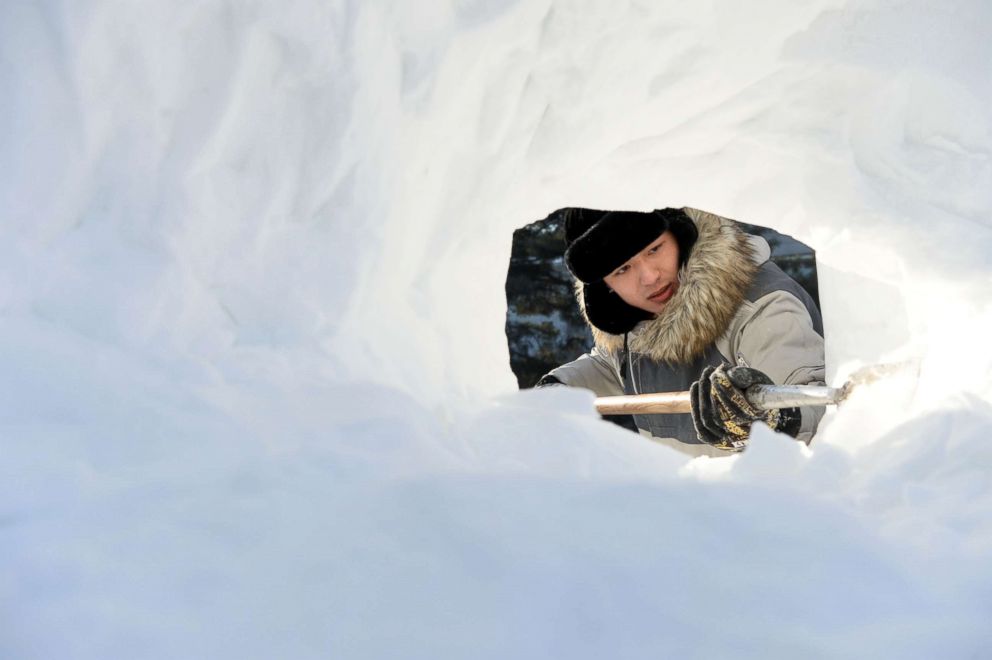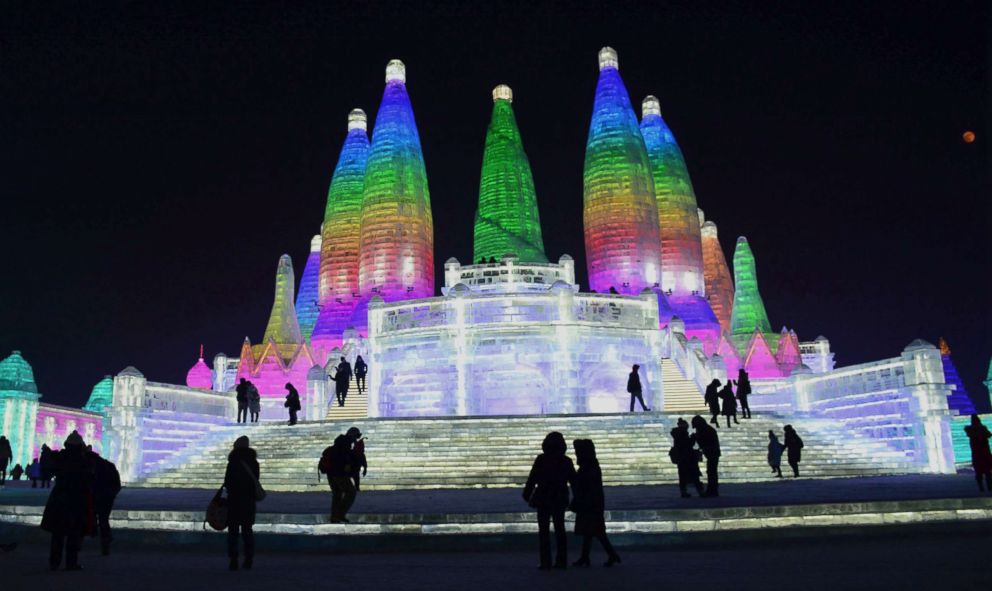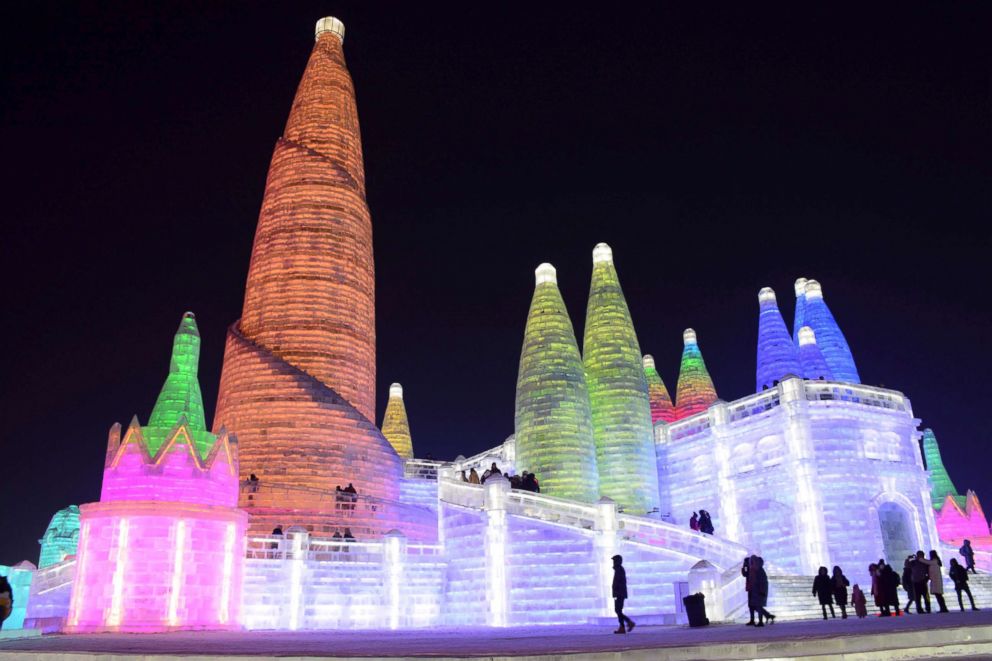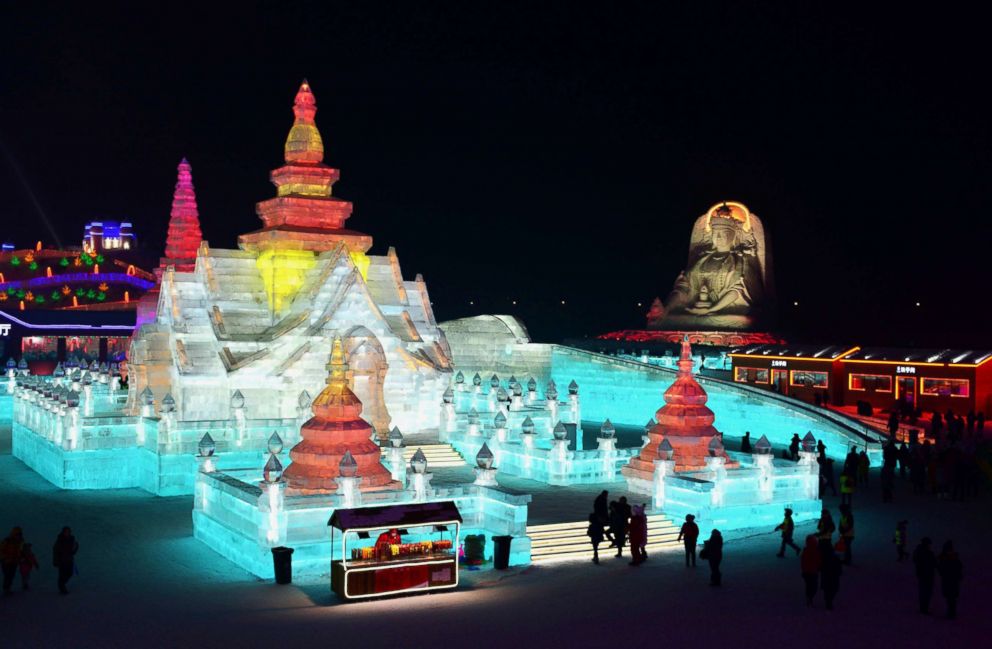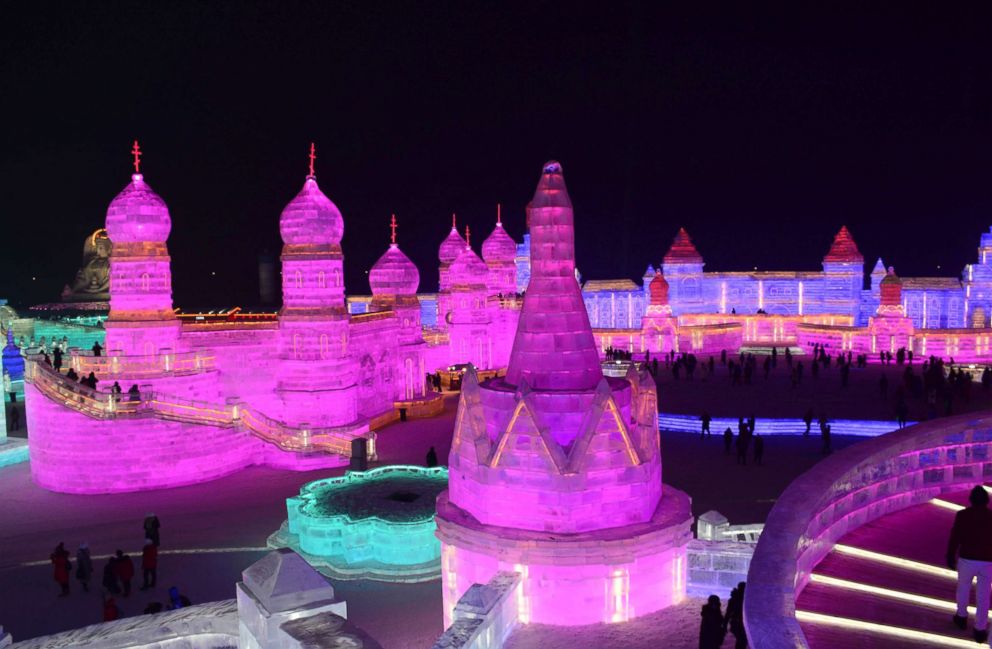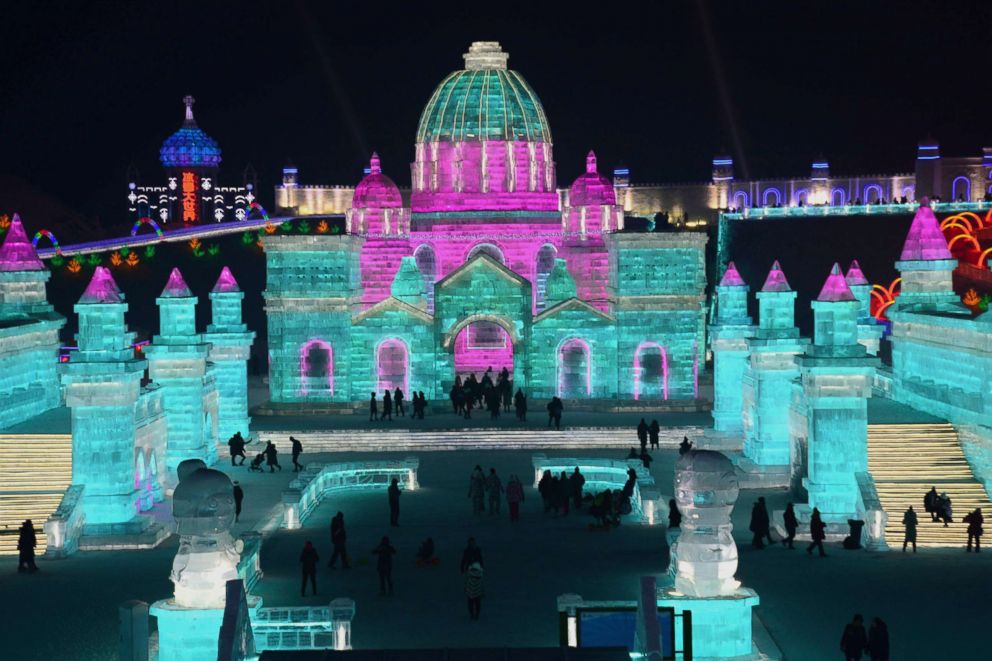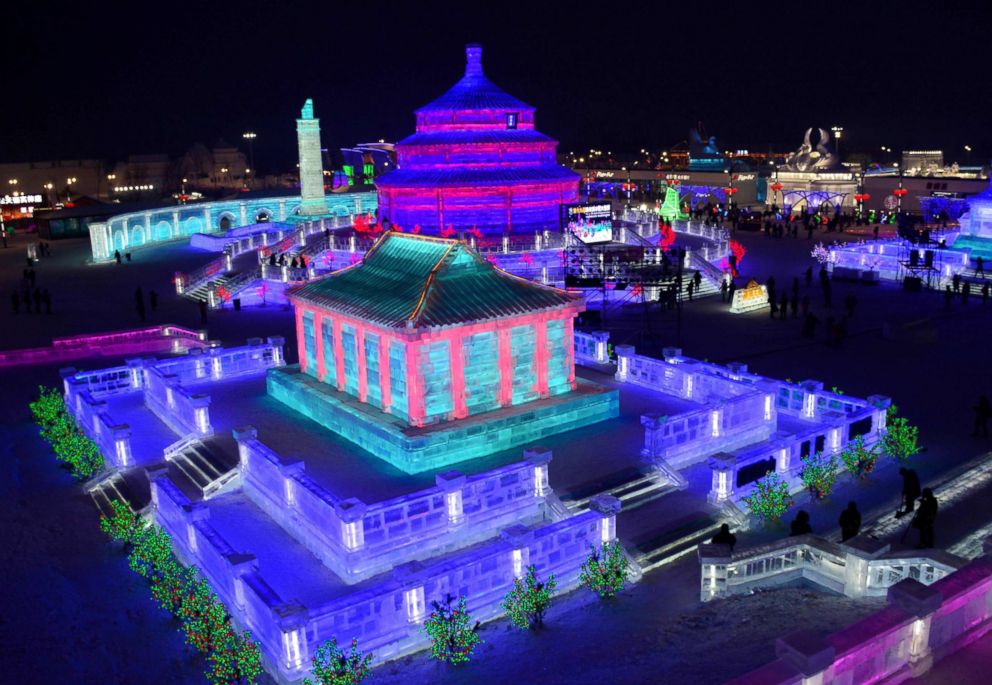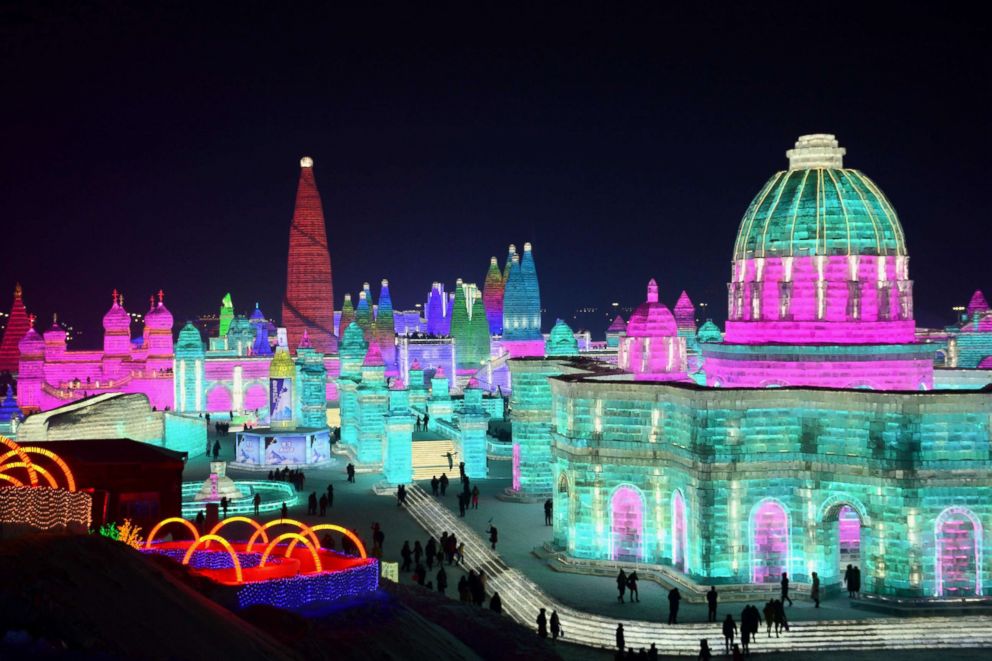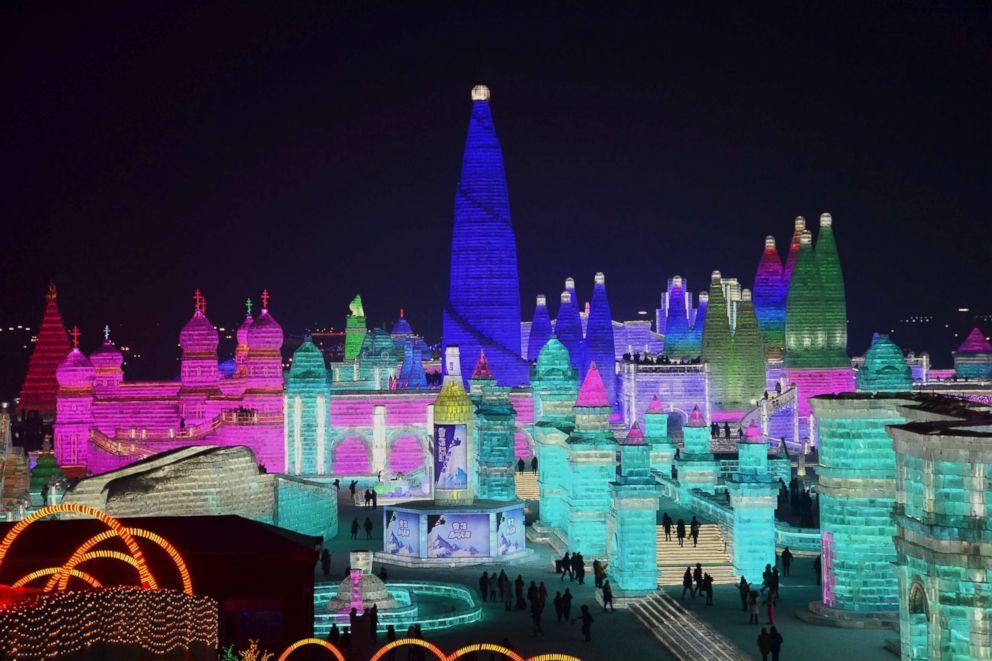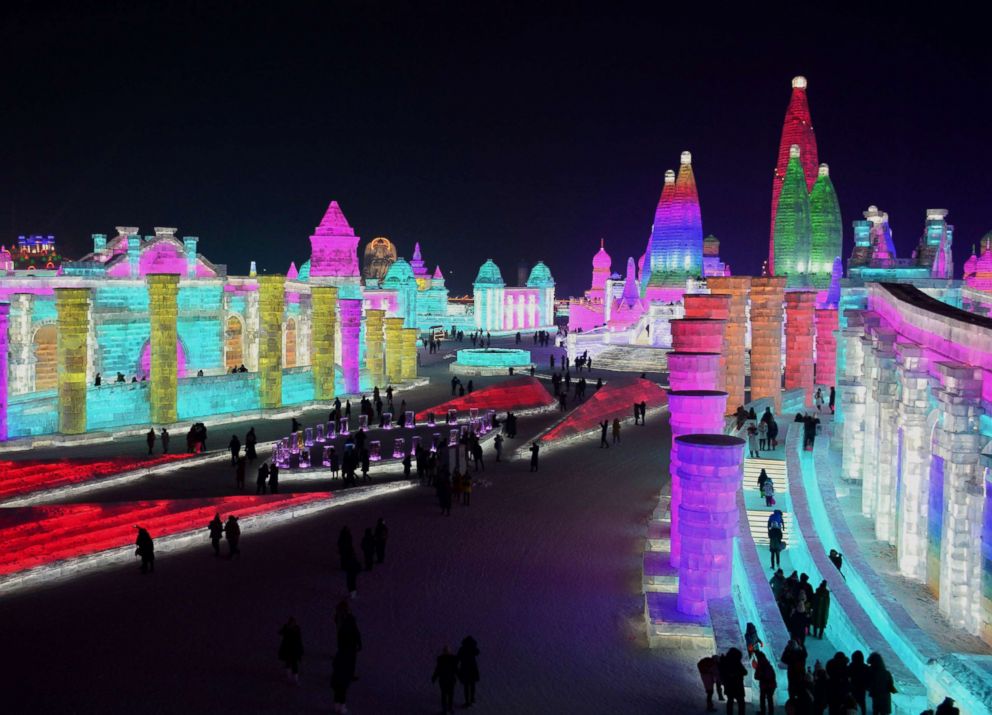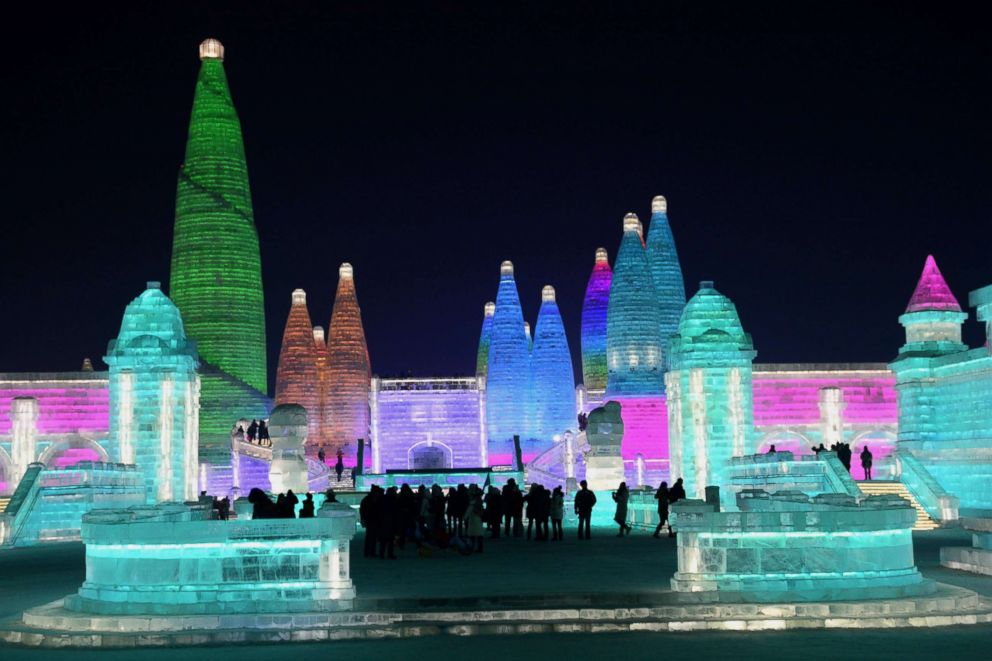Inside the ice kingdom: The world's largest ice and snow festival near Siberia
Near Siberia, the park features over 100 football fields of ice buildings.
— -- Though the world looks forward to cold-weather competitions every four years at the Winter Olympics, one city celebrates the fun and beauty of winter every year with life-sized carvings and an entire amusement park created from snow and ice.
Just after arriving at the airport in the Chinese city of Harbin, which has many cultural influences from neighboring Russia and Siberia, the spectacle is already impressive – sparkling ice sculptures, or rather, ice buildings, line the roads to and throughout the city.
The city hosts The Harbin International Ice and Snow Festival, a city-wide celebration of winter that grew from a humble city park fair in the 1980s to the sprawling winter wonderland it is today.
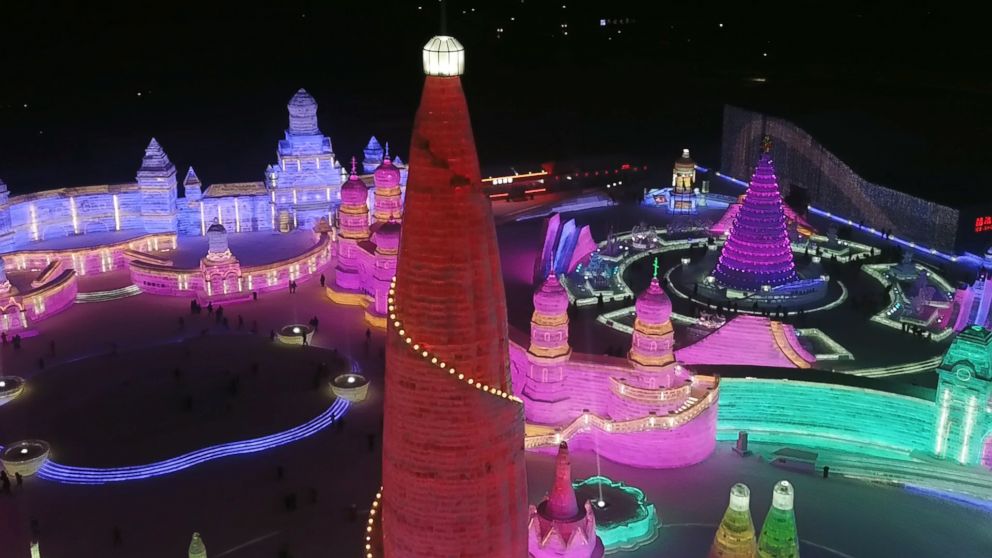
One of the biggest highlights of the festival is The Harbin Ice-Snow World, a theme park the size of 100 football fields, the largest of its kind. It’s like Elsa’s palace in “Frozen,” built with nothing but real ice.
The park attracts more than a million visitors every year, the organizers say, many of whom are tourists from the south of China who want to experience snow.
Winter conditions are an advantage here: the ice buildings, lit up by thousands of LED lights of changing colors, rely on the long nights to shine.
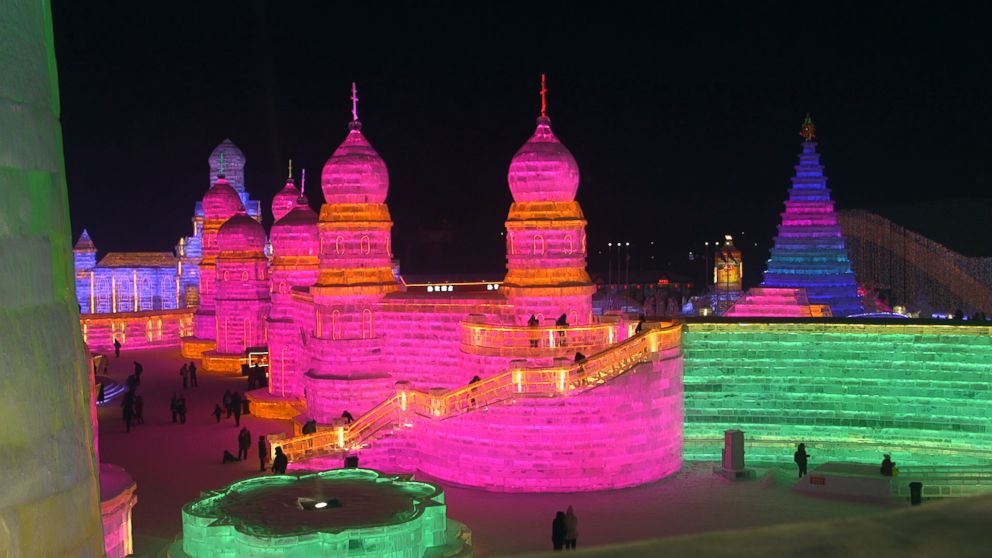
But it does easily fall below zero degrees; after all, Harbin is not far from Siberia. The activities in the park help keep visitors warm -- the longest ice slide in the world, in addition to many smaller slides, bike rings, bumper cars and all kinds of other sliding rides.
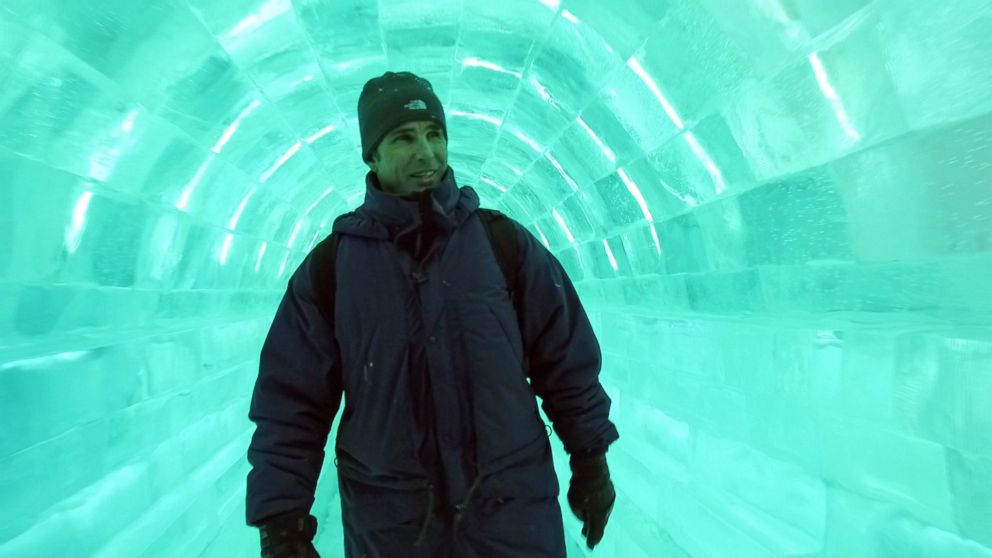
The festival has also created a very specialized job: ice architect. The lead architect for the festival, Cui Shiyao, is originally from Harbin. Now in his early 30s, he has been designing the ice buildings for three years.
Cui says the construction of the park took just two weeks. It took as many as 10,000 workers, he said, and the job was very much "similar to ordinary construction work."
Instead of using bricks and mortar, the army of workers strictly followed a design plan to build the structures using ice blocks and water.
The source of all that ice is one of the most amazing aspects of the feat. The expansive Songhua River that flows through the city lies under a thick surface of ice in the winter.
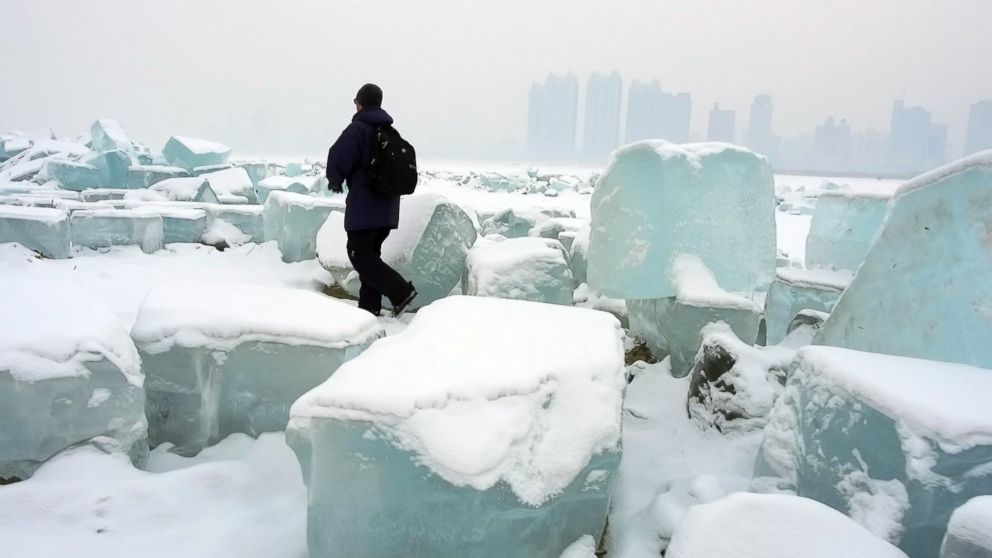
Standing on top of the wide frozen river, under a white city skyline, the horizon seems to go on forever. Scattered ashore, the giant blue ice blocks that the ice farmers carved make the people seem smaller.
The men work from 4 a.m. to sunset using chainsaws to dislodge the massive ice bricks from the river. They pull the pieces out with hooks; backbreaking and slippery work. They have a camaraderie, as well as pride in contributing to the beautiful festival, that helps them through the days. It’s a legacy job that many have had for years and few are in line to inherit; the youngest member of the crew was 40.
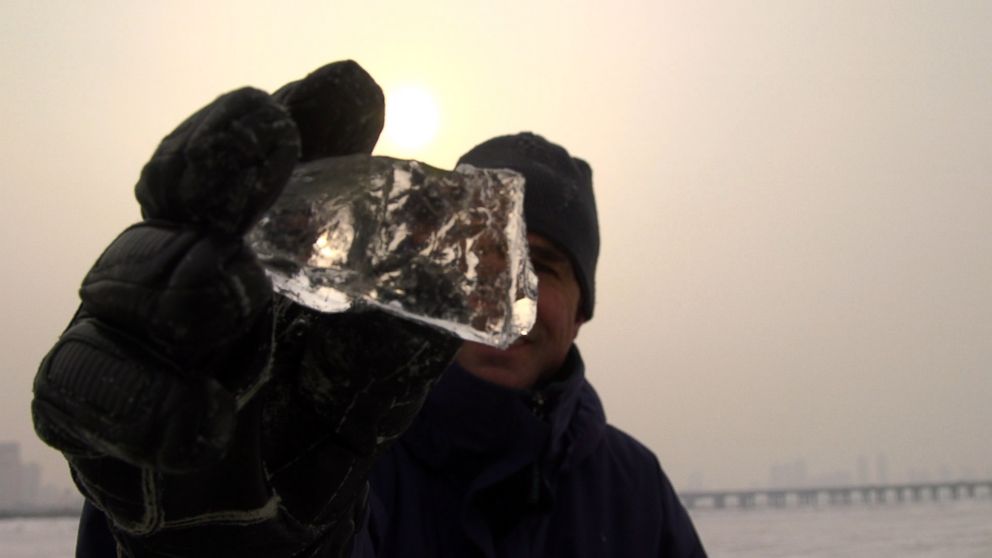
When the festival begins in Harbin, the frozen works of art will remains on display for about two months. Then, everything melts to the ground naturally, as a proper farewell to the winter. Nothing is preserved.
"It is the beauty of the moment," Cui said.
Next year, the process starts all over again.
Annual Harbin Ice and Snow Festival
